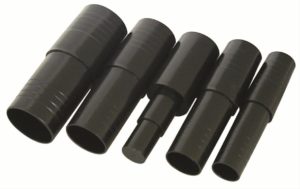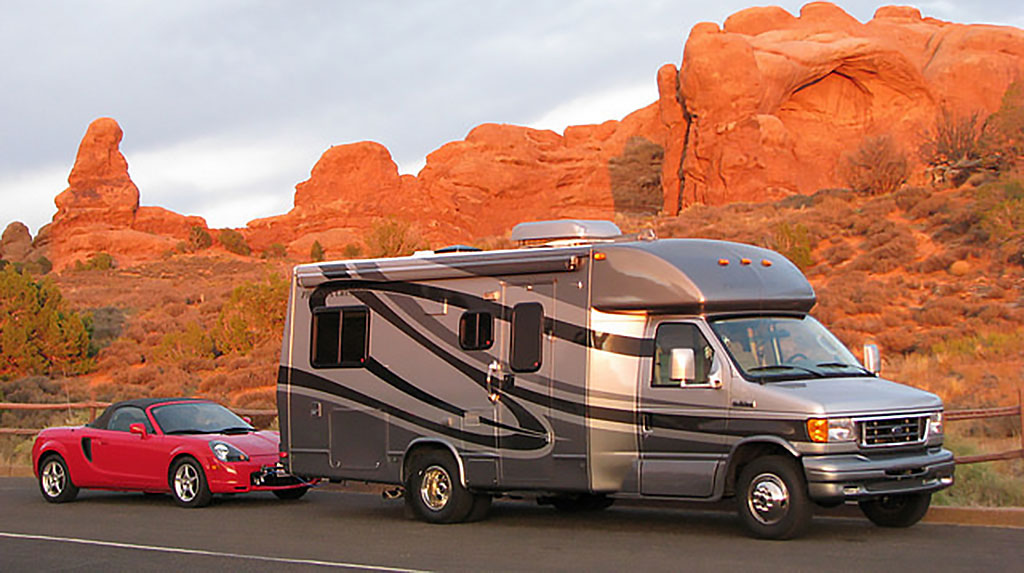A recreational vehicle gives you the freedom to explore our great country. Many people extend this freedom by towing a vehicle behind their RV to use for sightseeing or running to the grocery store once they have set up camp. A TOAD (or dinghy, in RV language) is the extra vehicle you tow behind your motorhome.
With few exceptions, the transmission of every dinghy has limitations as to how far and how fast it can be towed before the transmission will be damaged. This applies to both automatic and manual transmissions. But there are steps you can take to prevent this from happening.
Don’t Trash Your Tranny!
As a vehicle is being driven, transmission fluid circulates throughout the transmission, cooling, lubricating and cleaning internal components.
With the exception of some four-wheel-drive and all-wheel drive vehicles, a transmission must be in neutral if the vehicle is being towed on its drive wheels, such as being flat towed behind an RV.
In a TREMEC-equipped vehicle, rotation of the rear wheels (even in neutral) causes the mainshaft to turn. Without being engaged in a gear, the cluster will not turn and lubrication will be fed to critical parts.

In this state, the mainshaft will spin minus the necessary lubrication, until it burns up the needle bearings under the speed gears and/or the pocket bearing between the mainshaft and input shaft.
When towing a TREMEC-equipped vehicle with the rear wheels on the ground, the driveshaft must be disengaged. Disconnecting the driveshaft prevents the transmission from overheating and also wear and tear to the transmission’s components.
There are a number of ways you can safely pull your TREMEC-equipped vehicle behind you: trailer, tow dolly or flat towing.
Flat Towing Advantages and Disadvantages
Flat towing with a tow bar (towing with four wheels down) is often preferred by RV owners.
- Advantages: Flat towing, rather than using a dolly or full trailer, reduces the amount of weight being towed. It also means no space is needed for parking a trailer once you arrive at your campsite.
- Disadvantages: Tow-bar assemblies, at least the base-plate portion, tend to be unique to a particular vehicle. TREMEC-equipped vehicles cannot be towed in this manner without drivetrain modifications.
Disconnect the Driveshaft
When towing a TREMEC-equipped vehicle with a dolly or tow bar, you must disconnect the driveshaft from the differential. Refer to your vehicle’s owner’s manual or contact your local mechanic for assistance. You then need to secure it out of the way.
You will need to plug the tailshaft of the transmission to prevent transmission fluid from draining out. Inexpensive plug sets are available at most auto parts stores.

A clever option is to install a driveshaft coupling disconnect on the rear driveshaft. Superior Driveline offers a disconnect for quite a few rear-wheel- and four-wheel-drive vehicles that aren’t towable.
Some vehicles have a shifter that mounts on the rear differential with a cable that runs through the floorboard so that the driveshaft can be disengaged from the driver’s seat.
Resources
When preparing your towing package, you will need some specialized equipment for both safety and to meet the towing laws in states you’ll be traveling through. Accessories and information are available at RV outlets and dealerships.
If dinghy towing is new to you, there is much to learn before you get started Links for additional information include:
- MotorHome Magazine provides dinghy guides packed with setup tips, additional equipment and a list of dinghy-ready vehicles.
- Family Motor Coach Association provides a library of information on towing guides.
- The United States Department of Transportation provides tips on towing and other useful guidelines.

